Every year, we ask indie authors about their experiences with writing, publishing, and marketing. This year’s survey, with over 1,500 respondents, brings the biggest insights yet into what self published authors are doing—and what’s working for them.
Whether you’re just getting started on your first book or you’re a seasoned indie veteran, this data will help you understand the trends shaping indie publishing in 2024. So, grab a coffee (or your favorite writing snack) and dig in.
Table of Contents
1) How Are Authors Publishing in 2024?
5) Book Formats & Print-On-Demand
9) Author Websites and Direct Sales
12) Email Marketing & List Building Strategies
1) How Are Authors Publishing in 2024? 📖
Results 📊
The indie author community continues to thrive, with 76.2% of respondents identifying as self-published, while 16% described themselves as hybrid authors—meaning they dabble in both self-publishing and traditional routes. Only 7.8% of authors remain fully in the traditionally published camp.
Analysis 🧐
Indie publishing has cemented itself as a dominant force. Self-publishing is no longer a “backup plan”—it’s a viable path to success. With so many tools and services available, authors are taking control of their careers and embracing the flexibility that self-publishing offers.
What It Means for You 💡
If you’re considering self-publishing, now is the time! You’re joining a huge community of empowered authors, and there’s no shortage of resources to help you succeed. 🎉 Whether you want to maintain full creative control or diversify your revenue streams, self-publishing offers the freedom to build your author career on your own terms.
2) Motivation & Income
Motivation for Publishing: What Drives Indie Authors? 🎯
Results 📊
When asked about their primary motivation for publishing a book, authors offered a range of responses, with less than half focused on financial goals:
- 42.7% of respondents said, “I want to make money from my book,” highlighting a strong financial drive for many indie authors.
- 19.3% indicated that “I want my story to be told,” showing a significant portion of authors are motivated by sharing their personal or creative narratives.
- 16.7% stated that “writing is a hobby I enjoy,” reflecting the passion and enjoyment they find in the writing process itself.
- 14.7% want to become “a well-known author,” indicating a desire for recognition and status within the literary community.
- 6.8% selected “other,” with a mix of unique or alternative motivations not captured by the main categories.
Analysis 🧐
This data highlights that not every author is primarily motivated by financial goals—many are driven by the intrinsic value of storytelling or the joy of writing as a creative outlet. Interestingly, a deeper look into the data shows that authors who specifically stated that their goal was to make money from their writing tend to be higher earners than those with other motivations. This suggests that treating writing like a business and prioritizing financial success can directly impact income levels. Authors with financial goals may approach the process more strategically, investing in marketing, editing, and other areas that help boost sales.
What It Means for You 💡
If you’re writing primarily for the love of the craft, that’s a wonderful place to start—and your passion will resonate with readers! However, if your goal is to increase your earnings from writing, the data suggests it’s beneficial to approach your career with a more business-minded focus. Authors motivated by income tend to see higher returns, likely because they invest in key areas like professional editing, cover design, and marketing.
Income Breakdown: How much Are Authors Earning each month? 💵
Results 📊
While 46% of authors earn $100 or less, the majority—54%—are earning over $100 monthly from their writing. Authors in the $251 – $1,000 range make up 17% of respondents, while the higher income brackets, from $2,501 to over $20,000, account for 17% of respondents.
Analysis 🧐
This data highlights a positive trend: while a significant portion of authors are still in the early stages of earning, more than half are generating some income from their writing. The $251 – $1,000 bracket represents a strong starting point for many indie authors, and it suggests that growth is possible as authors refine their strategies. Authors in the higher-income ranges, though fewer in number, demonstrate that there is real earning potential, particularly for those who focus on consistent marketing and building a backlist. The 17% of authors earning between $2,501 and $20,000+ are proof that indie publishing can be a sustainable career with the right approach.
What’s particularly telling, though, is the correlation between an author’s primary motivation and their income. Authors who report that their primary motivation is to make money from their writing tend to fall into the higher income brackets. In contrast, authors who are primarily motivated by passion—such as the 33.8% who publish to “have their story told” or the 27% who view writing as a hobby—may not place as much emphasis on maximizing earnings. As a result, they may be more likely to fall into the lower-income brackets, where the financial returns are modest but the creative rewards are high.
What It Means for You 💡
If your primary goal is to make money from your writing, this data confirms that making money from your writing is possible. If you’re already earning over $100 per month from your writing, you’re on the right track! The next step is scaling up. If you’re currently in the lower brackets, remember that it’s common to start small—but many authors grow their income steadily over time. Every book you publish is an opportunity to reach more readers—and earn more revenue.
If your motivation for writing is driven by creativity or personal fulfillment, don’t be discouraged by lower earnings. Writing for the love of storytelling or as a creative outlet is incredibly rewarding in its own right.
3) Genres
Genre: What Genres Are Indie Authors Writing? 📚
Results 📊
No surprises here—Romance continues to dominate, with 22.7% of authors claiming it as their primary genre. Fantasy comes in second at 12.8%, followed by Science Fiction at 7.5%, and Thriller close behind at 7.3%.
In the higher income brackets (over $2,501 per month), certain genres such as Cozy Mystery, Paranormal, Paranormal Romance, and Romance are more prominent. These genres seem to provide more earning potential, especially in the ‘$10,001 – $20,000’ and ‘More than $20,000’ income ranges.
Analysis 🧐
Romance’s dominance isn’t a surprise, but it’s interesting to note how genres like Cozy Mystery and Paranormal Romance gain traction in higher income brackets. This could be because these genres often come with loyal reader bases who are willing to invest in their favorite series or authors. The larger income in these categories may also be attributed to the voracious reading habits of fans within these genres.
What It Means for You 💡
If you write in one of these top genres, you’re in good company! However, don’t be discouraged if your genre isn’t in the top three—niche genres have dedicated readers too. Focus on finding and serving your unique audience, and remember: many authors find great success by targeting specific, underserved readerships. 💖
4) How Many Books Have Authors Published? 📚
Results 📊
The average number of books published by authors in the 2024 survey is 8 books, but this number varies widely depending on how long an author has been writing and their income bracket. Here’s a detailed breakdown by monthly income bracket:
Analysis 🧐
There’s a strong correlation between the number of books published and author income. Authors in the highest income brackets are far more prolific, with those earning over $20,000 publishing an average of 61 books. Meanwhile, authors in the lower income brackets have typically published fewer titles, with the $100 or Less group averaging 9 titles.
This suggests that the more books an author publishes, the more likely they are to see increased visibility and revenue. The benefits of having a larger backlist are clear—more books mean more opportunities to capture new readers, run promotions, and cross-sell between titles. Additionally, each new book added to an author’s backlist contributes to their long-tail sales which indie authors often rely on to create consistent income over time.
Having a backlist also makes it easier for authors to experiment with pricing strategies, box sets, or bundles, giving them more ways to maximize their sales potential. Many authors in the higher income brackets have built up substantial backlists, which allows them to take advantage of these strategies and compound their success with each new release.
What It Means for You 💡
Building a backlist takes time, but it’s one of the most important strategies for long-term success in indie publishing. If you’re early in your author journey and haven’t published many books yet, don’t worry—every book you add to your catalog increases your earning potential. Focus on writing regularly and consistently growing your backlist, as each new title offers another chance to reach readers, boost your visibility, and ultimately grow your income.
Additionally, if you’ve already published several books, now’s the time to consider leveraging your backlist. Create box sets, try different pricing strategies, and run promotions to draw attention to your older works. As your backlist grows, so do your opportunities for success!
5) Formats & Print-On-Demand (POD) 📚
Results 📊
While eBooks remain the top format for indie authors, paperbacks have solidified its place as a must-have offering, especially for authors who want to reach readers who prefer physical books. Almost half of authors now have at least one title in audiobook format. Collector’s Editions are a growing format, especially with the rise of Kickstarter campaigns and Direct sales.
Analysis 🧐
The majority of authors are fulfilling their print orders through print-on-demand (POD). Amazon’s KDP is the overwhelming favorite for POD, due to its seamless integration with Amazon’s marketplace. IngramSpark is the second most-used platform, providing access to broader distribution channels, especially for those aiming to reach brick-and-mortar bookstores and libraries. Draft2Digital is a less common option for POD, but it’s used by authors looking for additional distribution flexibility.
What It Means for You 💡
If you’re not offering print books yet, adding POD to your lineup can expand your reach significantly. Audiobook creation is becoming cheaper with every passing year, and is also something to consider as you plan for 2025.
6) Cover Design: Investing in the First Impression 🎨
Results 📊
Cover Design Spending by Income Bracket
Indie authors’ spending on cover design varies based on income, and here’s how it breaks down:
- Lower-earning authors (especially those earning $100 or less/month) tend to spend very little or nothing on cover design. Many rely on free or low-cost tools like Canva or pre-made templates, creating their own covers to save money.
- Mid-range earning authors (those earning between $251 – $1,000 and $1,001 – $2,500) generally spend between $100 – $499 on cover design. They often hire freelancers or use more affordable design services to create polished, professional covers that suit their genre and appeal to their target readers.
- Higher-earning authors (in the $10,001 – $20,000 and More than $20,000 brackets) are more likely to invest heavily in professional cover design. These authors tend to spend between $500 – $999 or more for a custom cover design, and some at the very top of the income scale even spend $1,000+. This higher investment ensures they have genre-appropriate, eye-catching covers that stand out in the marketplace and help sell their books.
Analysis 🧐
The importance of a high-quality cover can’t be overstated. As the first thing a potential reader sees, your cover plays a critical role in drawing them in and signaling what to expect from your book. While lower-earning authors may start with DIY or pre-made covers, as they progress in their careers, many shift to professional cover designers to ensure their books stand out in a crowded marketplace.
Higher-income authors understand the long-term return on investment that comes from a great cover—especially in competitive genres like Romance, Fantasy, and Thriller, where a compelling cover can make all the difference in attracting readers. They’re willing to spend more to ensure that their covers not only look professional but also align with genre expectations, helping to sell more copies.
What It Means for You 💡
If you’re just starting out and have a limited budget, using free tools or pre-made covers is a great way to get your book out there. But as you build your author brand, investing in professional cover design will help set you apart. Even spending in the $100 – $499 range can dramatically improve the appeal of your book, making it more likely to catch the eye of your target audience. As your income grows, consider raising your investment in cover design to maximize your book’s visibility and sales potential. ✨
7) Editing: Polishing Your Story for Success ✍️
Authors’ spending on editing services varies, with almost 70% of authors investing some resources in professional editing services, while nearly a third of authors do not outlay cash for editing.
Editing Spending by Income Bracket
The amount authors spend on editing varies based on their income, but it’s not always the case that high-income authors spend the most. Here’s a detailed breakdown:
- Lower-Earning Authors: Authors earning $100 or less are more likely to spend little to nothing on editing. Many rely on beta readers, self-editing, or skip professional editing entirely due to budget constraints. However, a significant portion of authors in this bracket still invest in editing, with many spending between $100 – $999, showing that even with limited resources, these authors understand the value of a well-edited book.
- Mid-Income Authors: Authors earning between $251 – $1,000 and $1,001 – $2,500 are more likely to invest between $100 – $999 on editing. Spending in the $500 – $999 range is common in these income groups, balancing cost with the need for professional polish to ensure the book is market-ready.
- Higher-Earning Authors: Interestingly, while many authors in the $10,001 – $20,000 and ‘More than $20,000’ income brackets do invest heavily in editing, not all of them spend significantly more than mid-income authors. Some may spend $500 – $999, while others may stick within the $100 – $999 range, indicating that editing is a priority, but not always an area where more spending is required. Only a small percentage of high earners spend over $2,000 on editing, with most opting for professional yet reasonably priced services that meet their needs without going overboard.
Analysis 🧐
The data shows that editing is a priority for authors across all income levels, but how much an author spends doesn’t always increase with income. Even high-income authors don’t always shell out top dollar for editing. Many high earners have refined their processes over time, knowing exactly what kind of editing their books need and using efficient editors who deliver great results without requiring massive budgets.
For lower- and mid-income authors, investing in professional editing—particularly in the $100 – $999 range—can significantly improve the quality of their books, enhancing reader satisfaction and helping to build long-term success. While high-income authors still invest in editing, they often find ways to balance quality and cost without necessarily spending more.
What It Means for You 💡
Editing is crucial to producing a polished, professional book, but it’s important to find the right balance between quality and cost. Whether you’re just starting out or further along in your career, investing in professional editing—within your budget—can elevate your book and lead to better reviews and reader retention.
For lower-income authors, starting with beta readers or lower-cost editors is a smart approach, but as your income grows, consider allocating more budget to editing. High-earning authors may not always spend more, but they still prioritize professional editing as part of their publishing process, and so should you. 💼
8) Revenue Channels & Kindle Unlimited (KU) 📚
Results 📊
When it comes to generating revenue, Amazon is still the dominant platform for indie authors, with 87% of respondents naming it as their top revenue source. Amazon did show a modest drop from last year when 91% of respondents listed it as their top source of revenue. Kickstarter, Apple, and Kobo all gained single-digit points as a top revenue source in 2024. When looking at which sources generated the 2nd most revenue for authors, Amazon still topped the list, but Apple and Direct Sales from Websites took a much larger share: 13% and 12% respectively.
87.5% of respondents have at least one book enrolled in Kindle Unlimited (KU). The sheer reach of Amazon’s Kindle ecosystem, coupled with the KU program’s page-read model, makes it a primary source of income for many authors. However, authors’ reliance on KU varies depending on their income level:
- Over 75% of Income from KU: A significant portion of authors in the higher-income brackets earn most of their income from KU:
- 31.8% of authors in the $5,001 – $10,000 bracket.
- 29.8% of authors in the $10,001 – $20,000 bracket.
- 25% of authors in both the $1,001 – $2,500 and More than $20,000 brackets.
- These authors are the most reliant on KU for their income, especially in the higher-earning brackets. The KU page-read system allows them to generate more stable income streams compared to solely relying on book purchases.
- No Income from KU: Conversely, a large percentage of lower-earning authors (earning $100 or less) report earning nothing from KU:
- 28% of authors in this bracket do not make any income from KU.
- Another 8% of authors in the $101 – $250 range also report making nothing from KU.
- These authors often fall into lower-income brackets and are more reliant on other sales strategies or platforms.
Revenue Channels Beyond KU 🌍
While Amazon remains the biggest player, other platforms also contribute to indie authors’ revenue, particularly for those who choose to publish “wide”—meaning they distribute their books across multiple retailers instead of being exclusive to Amazon.
Here’s a breakdown of the other key revenue channels:
- Apple Books: The second most lucrative platform for many wide authors. Apple Books offers access to a dedicated user base, particularly in international markets. Higher price points are often more sustainable on Apple compared to Amazon, making it an attractive option for some authors.
- Kobo and Barnes & Noble: While not as large as Amazon or Apple, these platforms offer additional revenue opportunities, particularly for authors focusing on print or reaching global markets.
- Smashwords and Draft2Digital: Frequently mentioned as alternative sources of revenue (“Other”), especially for authors looking to go wide. Smashwords has a strong presence, with many authors listing it as one of their top revenue-generating platforms. Draft2Digital is also popular for its ease of use in distributing to multiple retailers and libraries.
- Direct Sales: As mentioned in the Direct Sales section, more authors are experimenting with selling directly from their own websites. This trend is growing as authors realize the benefits of keeping a larger percentage of their revenue and building stronger relationships with readers.
- Patreon: Some authors are using Patreon as a platform for generating income through reader subscriptions, particularly for niche genres or serialized content.
- Audiobook Platforms: While Audible dominates the audiobook market, other platforms like Findaway Voices and Chirp are gaining traction for authors seeking more control over their audiobook sales and distribution.
- Library Sales: Platforms like Overdrive and Hoopla offer authors another revenue channel, particularly for audiobooks and eBooks. Authors who focus on wide distribution often find these platforms contribute meaningfully to their overall income.
Analysis 🧐
Amazon is undeniably the biggest driver of revenue for indie authors, particularly those enrolled in KU, which allows them to earn not just from sales but from page reads. For higher-income authors, KU is a reliable source of income, with many earning over 75% of their revenue from this program. However, going wide is a viable and often successful strategy for authors who want to diversify their income and reach more readers globally. Platforms like Apple Books, Kobo, and IngramSpark offer alternatives to those who want to avoid being solely dependent on Amazon. Direct sales, while still a growing trend, is also proving to be a powerful tool for authors looking to build a more direct connection with their audience and capture a larger portion of the sale price.
What It Means for You 💡
If you’re heavily reliant on Amazon and KU, you’re in good company. However, if you want to diversify your revenue streams, consider going wide. Platforms like Apple Books, Kobo, and IngramSpark provide additional opportunities to reach readers, particularly in international markets or for print distribution. Experimenting with direct sales through tools like Shopify or BookFunnel could also help you build stronger connections with your readers while keeping a larger share of your profits. 📚
9) Direct Sales: A Growing Trend
Results 📊
In 2024, 87.5% of authors have a website, but only 29.6% sell books directly from their site. However, 33.2% plan to start offering direct sales within the next year.
Direct Sales by Income Bracket 🛒
Results 📊
The adoption of direct sales—selling books directly to readers rather than relying solely on third-party platforms like Amazon—varies widely depending on the author’s income bracket:
- Lower-Earning Authors: Authors in the $100 or Less bracket are far less likely to engage in direct sales. They typically rely heavily on third-party retailers like Amazon, Kobo, or Barnes & Noble to reach their readers. These authors may not yet have the resources, knowledge, or confidence to set up direct sales channels, preferring the simplicity and reach of established platforms.
- Mid-Income Authors: Authors earning between $251 – $1,000 and $1,001 – $2,500 begin to experiment with direct sales. These authors are more likely to sell directly from their websites or through platforms like Shopify or BookFunnel, but they typically maintain a presence on third-party retailers as well. Direct sales are viewed as a way to diversify revenue streams and keep more of the profits from each book sale.
- Higher-Earning Authors: Authors in the $10,001 – $20,000 and More than $20,000 income brackets show a more balanced approach between direct and third-party sales. These authors often capture revenue through direct sales while still leveraging the visibility and audience reach of platforms like Amazon. For them, direct sales provide a way to maintain more control over customer relationships and keep a larger percentage of the revenue from each sale.
Analysis 🧐
The data indicates that direct sales adoption grows as income increases. For lower-income authors, the focus is primarily on third-party platforms, which are often simpler to use and come with a built-in audience. As authors become more successful and start building their readership, they are more likely to invest in direct sales channels. Higher-income authors, in particular, benefit from having both direct sales and third-party sales in their overall strategy. Direct sales allow them to keep a larger share of the profits while also building stronger connections with their readers—an important aspect of growing a loyal fan base.
Additionally, authors who sell directly can offer exclusive content, signed books, or special deals that may not be available through larger retailers. This creates a more personal, engaging experience for readers while enabling authors to bypass platform fees and keep more of the sale price.
What It Means for You 💡
If you haven’t yet explored direct sales, it’s worth considering as your author career grows. Tools like BookFunnel and Shopify make it easier than ever to sell directly to readers while retaining control over your customer relationships and keeping a larger percentage of your revenue.
Start small—perhaps offering exclusive content or running a special sale—and gradually build up your direct sales strategy as your platform grows. By incorporating direct sales into your income mix, you can diversify your revenue streams and create a closer connection with your readers. 📈
10) Pricing Strategies by Income: How Authors Maximize Earnings 💵
Results 📊
The 2024 survey reveals distinct pricing strategies based on income levels:
- Lower-earning authors (earning $100 or less) tend to price their books lower, with many pricing between $0.99 and $4.99. A significant portion of these authors offer free books to build visibility and readership, with 142 free titles among this group.
- Mid-range income authors (earning between $251 and $2,500) display more varied pricing strategies, with prices ranging from $2.99 to $5.99. While some offer free books, it’s less common in these brackets than among lower-income authors.
- Higher-earning authors (earning more than $20,000) price their books higher, with most books ranging from $5.99 to $10+. These authors use free books more selectively, typically as part of a broader marketing strategy, rather than a primary method to build readership.
Across all income brackets, price points like $2.99, $3.99, and $4.99 remain popular, and while free books are common among lower-income authors, they are used strategically by authors at all levels.
Analysis 🧐
The data shows a clear correlation between income level and pricing strategies. Lower-income authors, in their effort to grow their readership, often rely on low-priced or free books to attract readers and build their fan base. As authors earn more, they become more confident in pricing their books higher, likely due to stronger reader followings and established brand recognition.
Interestingly, even though free pricing becomes less common in higher income brackets, it remains a valuable tool across all levels, suggesting that offering a free book can be an effective way to increase visibility and entice new readers. Authors who are earning more may be using higher price points as a way to reflect the perceived value of their work, particularly in niche genres or with dedicated audiences.
The $2.99 to $4.99 price range is popular across the board, showing that these price points are well-established in the indie market as effective options for maximizing both sales volume and profit margins.
What It Means for You 💡
If you’re just starting out or in a lower-income bracket, offering free books or pricing your books lower (between $0.99 and $4.99) can help you build visibility and expand your audience. Free pricing is particularly useful for newer authors to gain traction and attract reviews.
As you progress and your author platform grows, don’t hesitate to experiment with higher pricing. Authors in the higher income brackets have found success charging $5.99 or more, reflecting the value of their growing fan base and brand recognition. However, don’t discount the use of free offerings, even if you’re an established author—when used selectively, free books can be a powerful marketing tool to hook new readers or promote a series.
Overall, don’t be afraid to experiment with different price points—$2.99 to $4.99 are popular and effective across all levels, but as your career advances, adjusting your pricing strategy to reflect your growing audience can lead to higher returns. 📈💡
11) Marketing Tactics & Insights 🎯
Results 📊
Marketing remains the most challenging aspect of the indie author journey, with 78.5% of respondents citing it as the hardest part of self-publishing. On average, authors spend 8 hours per week on marketing, and approx. $700 per per month on marketing spend. The data shows a clear correlation between low marketing spend and lower income levels. Of the 297 authors who spend nothing on marketing, 91.25% fall into the low-income brackets, earning $100 or less or between $1,001 – $2,500 annually. This suggests that authors who don’t invest in marketing are overwhelmingly more likely to remain in lower income cohorts, reinforcing the importance of marketing spend in driving book sales and increasing author income.
Here’s how authors rated the effectiveness of popular marketing tactics:
- Promo sites like Freebooksy and Bargain Booksy: Rated 3.3/5 on average. These services remain favored for their affordability and ability to reach targeted audiences through email promotions. Freebooksy and Bargain Booksy offer strong results, especially for authors running price promotions (free or discounted books).
- BookBub Deals: Slightly higher, with an average rating of 3.4/5. Though more expensive than other promo sites, BookBub Deals consistently generate significant visibility and sales, making them a top choice for authors with the budget.
- Author Newsletters: Rated 3.3/5. Author newsletters remain a steady and reliable marketing tool, allowing authors to engage directly with their readers. While they may not provide immediate sales spikes, newsletters are crucial for long-term audience building and keeping readers informed about new releases and promotions.
- Lead Magnets: Rated 3.0/5. Lead magnets, such as giving away a free book or novella, can be an effective tactic for building an email list and attracting dedicated readers.
- Facebook Ads: Received a lower average rating of 2.9/5. Many authors find it difficult to optimize Facebook Ads, and the high cost-per-click can limit returns. Authors often need professional help or a steep learning curve to achieve success with this platform.
- Amazon Ads: Scored even lower, averaging 2.7/5. Like Facebook, Amazon Ads require careful targeting and constant optimization. Many authors struggle to see a consistent return on investment (ROI) without a deep understanding of the platform.
- Newsletter Swaps: This rating dropped from 2.6 last year to 2.4 this year. Authors may be finding diminishing returns from newsletter swaps, possibly due to overuse or less engaged audiences. While once a popular low-cost strategy, its effectiveness seems to have declined, indicating that authors may need to refine their approach or seek out new swap partners with more engaged lists.
- BookBub Ads: Average rating of 2.2/5. Many authors find BookBub Ads challenging to optimize and expensive, with limited results compared to other options
- Kickstarter Campaigns: Rated 2.1/5. Surprisingly, Kickstarter campaigns were rated lower than expected. While some authors have successfully used Kickstarter to fund their books, many may find it difficult to build momentum or reach their funding goals. The platform requires a different skill set—building a compelling campaign, engaging backers, and delivering rewards—which may not align with the typical marketing strategies used by indie authors. The lower score suggests that while Kickstarter has potential, it may not be the easiest or most reliable revenue channel for the average author.
Overrated Marketing Tactics (According to Authors) ❌
Many authors shared their experiences about which tactics felt overrated:
- In-person events: Considered the least effective by 23.6% of respondents. Book signings and author appearances can be fun and great for engagement, but they rarely translate into substantial sales, especially compared to digital strategies like email promos or paid ads.
- Social media: Ranked as overrated by many authors who struggle to convert social engagement into actual book sales. While social media is important for building your author brand and maintaining reader relationships, it often doesn’t generate immediate sales unless used in conjunction with other tactics.
Underrated Marketing Tactics 🌟
While many authors focus on common strategies like promo sites and ads, some less-discussed marketing tactics are proving highly effective for those who use them strategically:
- Reader Magnets: Offering free content (such as a novella, short story, or sample chapters) as a reader magnet in exchange for email sign-ups is a powerful way to grow an email list. Reader magnets are particularly effective when placed in the backmatter of a book or as part of a BookFunnel promotion. Authors who use reader magnets consistently find that they can build large, engaged email lists, which in turn boosts long-term sales.
- Backmatter Links: Adding email sign-up links or promotional offers in the backmatter of your book is an often-overlooked tactic. This simple method gives readers a direct path to continue engaging with you after they finish reading. Many authors credit their growing email lists and repeat sales to this subtle but effective strategy.
- Multi-Author Promotions: By participating in multi-author promotions, authors can share each other’s work with a broader audience, often resulting in significant email list growth and sales. These promotions are frequently organized through platforms like BookFunnel or StoryOrigin and work particularly well for authors with complementary genres or fanbases.
Analysis 🧐
The data shows that promo sites such as Freebooksy, Bargain Booksy, and BookBub Deals are still highly rated by authors and continue to deliver solid results, particularly for price promotions. These services are especially useful for boosting visibility, driving downloads, and generating reviews, and they’re more straightforward than paid ads on platforms like Facebook and Amazon. On the flip side, paid ads (especially Facebook Ads and Amazon Ads) are often seen as expensive and challenging, especially for those without the time or knowledge to manage them effectively. However, they can be powerful tools when optimized properly, particularly in highly competitive genres where promo sites alone may not be enough to gain traction.
The data also shows that marketing spend increases as author income rises, with higher-income authors investing more in marketing efforts. This makes sense because as authors generate more revenue, they have more resources to reinvest into promotional activities, which in turn helps to grow their audience and boost book sales, creating a positive feedback loop. In essence, increased marketing spend enables authors to reach more readers, which leads to higher earnings and more funds to continue investing in their author business.
What It Means for You 💡
If you’re feeling frustrated with marketing, it’s important to remember that many authors struggle to find the right approach. Don’t forget to test different strategies and track your results. What works for one author may not work for another, so keep experimenting until you find the tactics that deliver the best returns for your genre and audience. And if social media or in-person events aren’t bringing in the results you want, don’t be afraid to pivot to more effective methods.
💡 Pro Tip: Mix and match your marketing strategies to maximize your reach. A combination of promo sites, newsletter swaps, and reader magnets can build a long-term foundation for sales without relying too heavily on paid ads. 🚀
12) Email Marketing & List-Building Strategies 📬
Results 📊
Higher-earning authors are significantly more likely to have email lists. In fact, 96.08% of authors earning $10,001 – $20,000 have an email list, and 96.23% of authors earning more than $20,000 maintain a list. In comparison, only 53.23% of authors in the $100 or Less income bracket an email list.
Here’s how list size correlates with income:
Analysis 🧐
There’s a clear connection between having an email list and earning more as an indie author. Authors with larger email lists have a direct channel to engage with readers, announce new releases, and promote book sales without relying solely on third-party platforms. Higher-income authors seem to treat their email lists as key assets in their marketing toolkit, using them to build deeper connections with their readers.
What It Means for You 💡
Building and maintaining an email list is crucial for growing your readership and increasing your income. Even if you’re in a lower income bracket, start small—focus on organic methods like adding links in your backmatter and using social media to invite readers to join your list. As your list grows, you’ll have more opportunities to market directly to readers, which can lead to more sales over time. 📧
ESPs (Email Service Providers): What Authors Are Using for Their Email Lists 📤
Results 📊
The survey revealed several trends in the tools indie authors use to manage their email lists. Here’s a breakdown of the most popular ESPs by income bracket:
- MailerLite and Mailchimp dominate the lower- and mid-income brackets due to affordability and ease of use. These platforms are especially popular among authors earning up to $5,000 annually.
- ConvertKit and ActiveCampaign gain more traction with higher-income authors who require more advanced features, such as automation and list segmentation, to handle larger email lists.
- Flodesk and Klaviyo are niche but increasingly popular among authors with specific design or eCommerce needs.
- Sendfox and Substack are emerging as affordable, user-friendly options for newer authors or those looking for simple email list management without the bells and whistles of larger platforms.
- A significant number of authors (225 respondents) did not specify their ESP, which may indicate some authors still manually manage their lists or use custom solutions.
Analysis 🧐
Authors are choosing their ESPs based on their income level and marketing needs. While MailerLite and Mailchimp are cost-effective and beginner-friendly, higher earners are leaning towards more robust platforms like ConvertKit and ActiveCampaign, which offer advanced automation and segmentation features necessary for managing large lists and complex marketing strategies.
What It Means for You 💡
If you’re just starting out, platforms like MailerLite or Mailchimp are great entry points—they’re easy to use and affordable for smaller lists. As your income and list grow, you might want to explore more advanced ESPs like ConvertKit or ActiveCampaign, which can help you scale your email marketing and offer more personalization to your subscribers. 🚀
List-Building Tactics: How Authors Are Growing Their Email Lists 📈
Results 📊
The strategies authors use to build their email lists vary widely, but certain tactics stand out based on income bracket:
- Lower-earning authors ($100 or Less and $251 – $1,000) rely heavily on giveaways and social media to build their lists, with 159 and 188 entries for these methods, respectively.
- Mid-income authors ($1,001 – $2,500 and $2,501 – $5,000) tend to use a mix of backmatter links (placing signup links at the end of their books) and social media, though newsletter swaps with other authors are also common.
- Higher-earning authors ($10,001 – $20,000 and More than $20,000) take a more diversified approach. They use backmatter links, paid ads, multi-author promotions, and reader magnets (offering free content in exchange for email sign-ups).
Analysis 🧐
The choice of list-building strategies varies widely based on income, but low-cost, organic methods like social media and giveaways remain popular across the board. BookFunnel stands out as a highly recommended tool for authors in the lower and mid-income brackets. It’s favored for its ability to share free content and collaborate with other authors. As income increases, authors adopt more sophisticated strategies, including paid promotions and multi-author campaigns.
What It Means for You 💡
Growing an email list doesn’t have to break the bank! If you’re starting out, focus on low-cost, organic methods like social media, backmatter links, and reader magnets. As your author business grows, consider investing in paid ads or multi-author promotions to reach a wider audience and build your list even faster. 📬
13) Sentiment & Community 🤝
Results 📊
This year, we asked a few open-ended questions about how authors are feeling and where they find community. Authors expressed a mixture of optimism and frustration. Many voiced challenges around marketing fatigue, the saturation of the market, and a desire for better tools. However, there was also a strong sense of community, with groups like “20BooksTo50K” and “Wide for the Win” providing support and camaraderie.
What It Means for You 💡
If you’re feeling overwhelmed, remember you’re not alone. Seek out communities or author groups where you can share your journey and learn from others. Surrounding yourself with like-minded individuals can make all the difference! Finding a supportive group can be key to staying motivated, especially in an industry as competitive as self-publishing.
Sentiment & Community Detail 🤝
Challenges with Marketing 📣
One of the recurring themes in the survey responses was marketing fatigue. Many authors expressed frustration over the sheer amount of time and money it takes to promote their books effectively. For some, it feels like marketing has started to take away from their writing time—leading to a feeling of being spread too thin.
Several respondents noted that while they’ve tried various marketing services, it’s challenging to find those that consistently deliver meaningful results. There’s a growing sense among indie authors that paid ads on platforms like Facebook and Amazon can be overwhelming, with costs often outweighing the returns.
Key Quotes from Authors:
- “Marketing books, specifically, is the most frustrating thing there is to do. I truly don’t want to spend the time or even have the time to do it.”
- “I just wish there was someone who would stop selling their services and actually provide a service that worked.”
Desire for Better Tools and Options 🔧
Several authors voiced a desire for more tools and options to help them market their books—particularly for niche genres or when it comes to direct sales. There’s a growing interest in moving away from relying entirely on platforms like Amazon, with many authors seeking tools that will help them build stronger direct relationships with their readers.
Authors also expressed a need for more support in marketing specific genres like paranormal mystery, and in reaching international or niche audiences.
Key Quotes from Authors:
- “Just more opportunities to promote direct sales. All the current promos send readers to third-party platforms while a lot of us are trying to build our direct sales.”
- “We need more ways to market niche books to the right readers.”
Frustration with ROI and Market Saturation 🌊
The increasing saturation of the indie publishing market was another frustration many authors shared. A few noted that even with effective promotion stacks, sales weren’t always enough to justify the cost. Some authors are starting to experiment with alternative revenue models such as Kickstarter or Patreon, pivoting away from traditional retail-based strategies.
Key Quotes from Authors:
- “I paid for a promo and didn’t sell a book. Very underwhelming.”
- “I (and many other well-earning authors) have restructured our marketing plans around NOT using newsletters. The results are on the downward slope.”
Views on AI 🤖
The responses regarding AI were mixed. Some authors are vocally opposed to the idea of AI in writing, seeing it as a threat to creativity and the authenticity of storytelling. Others are more neutral, either curious about its potential or simply tired of hearing about it altogether.
Key Quotes from Authors:
- “You didn’t have an option: I wouldn’t touch AI at any price.”
- “Help authors avoid the temptation to take AI shortcuts. They’ll thank you later.”
Community and Burnout 🏃♀️
Despite the frustrations with marketing and market saturation, there was an overarching sense of community among authors, with many pointing to forums and groups like 20BooksTo50K and Wide for the Win as invaluable sources of support. These groups have become go-to resources for indie authors, offering advice, encouragement, and camaraderie.
That said, burnout is real. Several authors expressed feeling worn out by the constant grind of writing, marketing, and managing the business side of being an indie author. Balancing it all has become a significant challenge, with some authors voicing concern about sustaining momentum over time.
However, the community spirit is still strong, with many authors thanking WWM for its consistent support, resources, and marketing tools, despite the difficulties they face in the marketplace.
Key Quotes from Authors:
- “I think we’re happier as writers when we remember why we started writing in the first place.”
- “Just a general sense of despair when it comes to ever succeeding as a writer. But I’m not giving up.”
Popular Author Communities 🌐
When asked about online author forums and groups, many respondents revealed they are part of multiple communities. Groups like 20BooksTo50K and Wide for the Win were mentioned frequently, but there are also genre-specific groups on Facebook and Discord that indie authors find valuable.
Facebook remains the most popular platform for these groups, with Discord also gaining traction, particularly among authors who prefer more niche, focused conversations. Some authors even create their own private groups for targeted discussions, such as those centered around Kickstarter, subscriptions, or marketing strategies.
Commonly Mentioned Groups:
- 20BooksTo50K: A highly popular group focused on helping indie authors achieve financial success.
- Wide for the Win: A group for authors committed to selling books on multiple platforms beyond Amazon.
- Self-Publishing Formula (SPF): Another well-regarded resource for marketing and self-publishing advice.
- Sisters in Crime, Romance Writers of America (RWA), and Women’s Fiction Writers Association (WFWA): Frequently mentioned for genre-specific support.
Community Fatigue 💬
While these online communities can be incredibly helpful, some authors mentioned community fatigue. Being part of too many groups or constantly engaging in discussions can become overwhelming. There were mentions of drama, time-wasting, and limited ROI (return on investment) when it comes to participating in these forums. Some authors have reduced their group participation to focus more on writing.
Several authors mentioned they have opted out of these groups altogether, choosing to work independently to avoid distractions.
Key Quotes from Authors:
- “I’ve left most of the groups. They became time sucks.”
- “Too much drama in some of these forums. I’d rather just focus on writing.”
Non-Members 👥
Interestingly, a notable minority of authors stated that they either don’t participate in any groups or have left them entirely. Some mentioned negative experiences, time constraints, or simply preferring to focus on their writing instead of engaging in online discussions.
Conclusion: What We Learned in 2024 🎉
This year’s survey confirms what many of us already know—self-publishing is thriving, and success in this space requires a combination of hard work, strategic thinking, and creative marketing. Whether you’re just starting out or looking to grow your author business, the insights from our survey can help you on your journey.
And remember, there’s no one-size-fits-all approach to indie success. Take these insights as a guide, but always feel free to experiment and find what works best for you. We can’t wait to see what you accomplish in 2025! 🚀

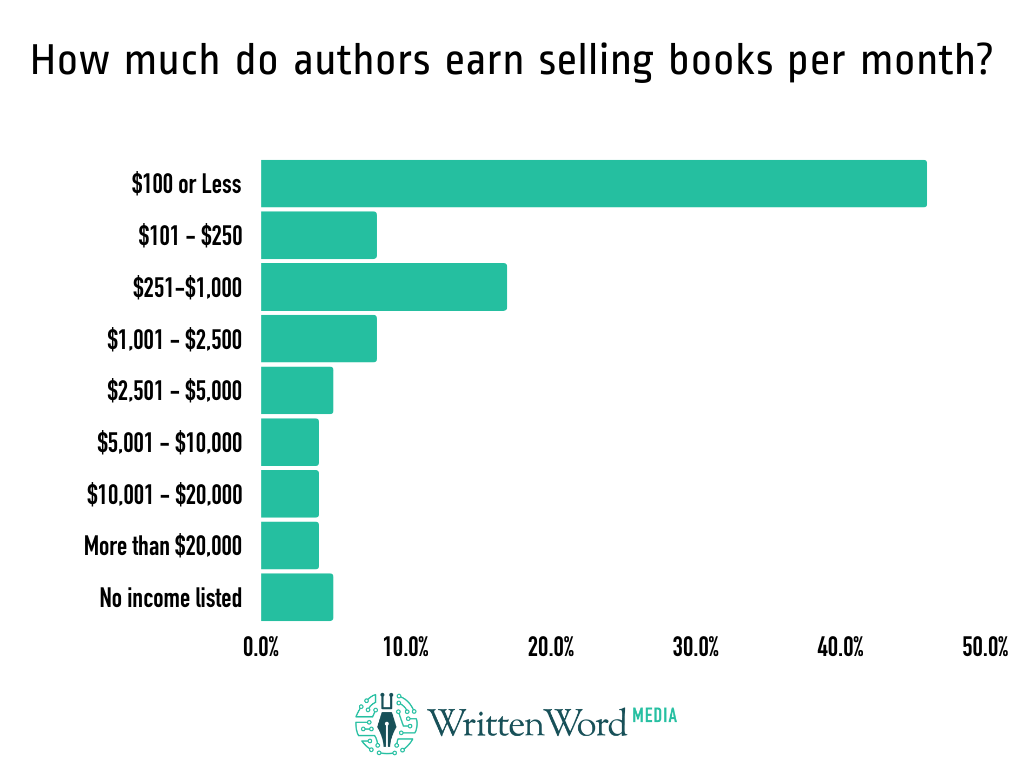
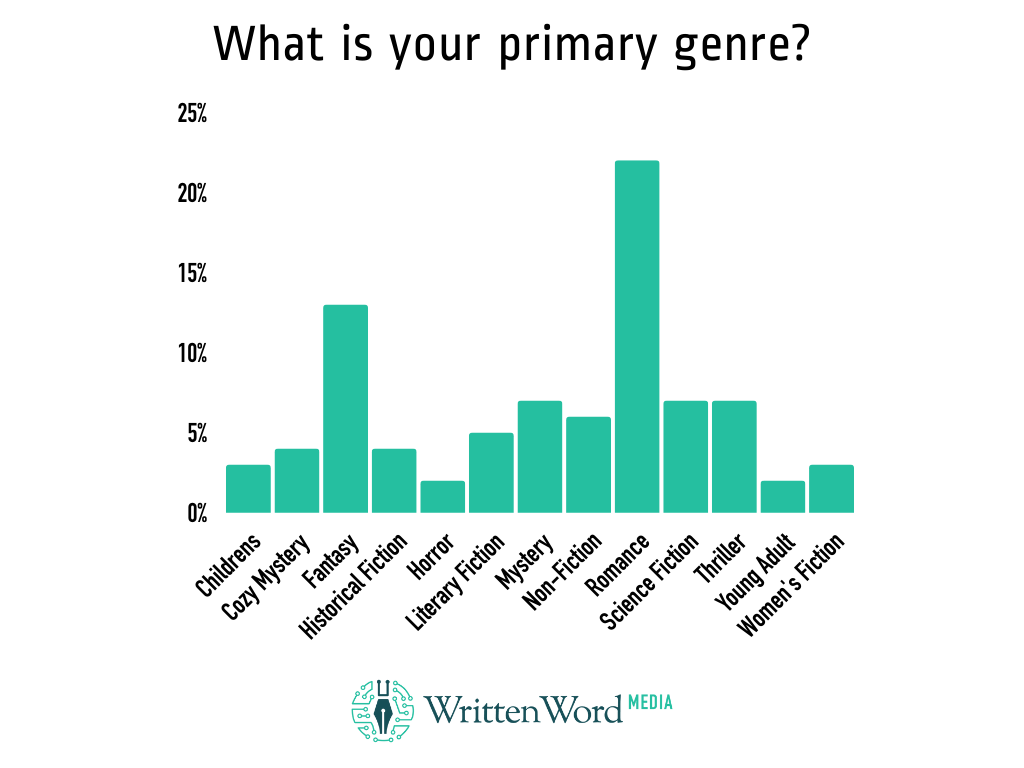
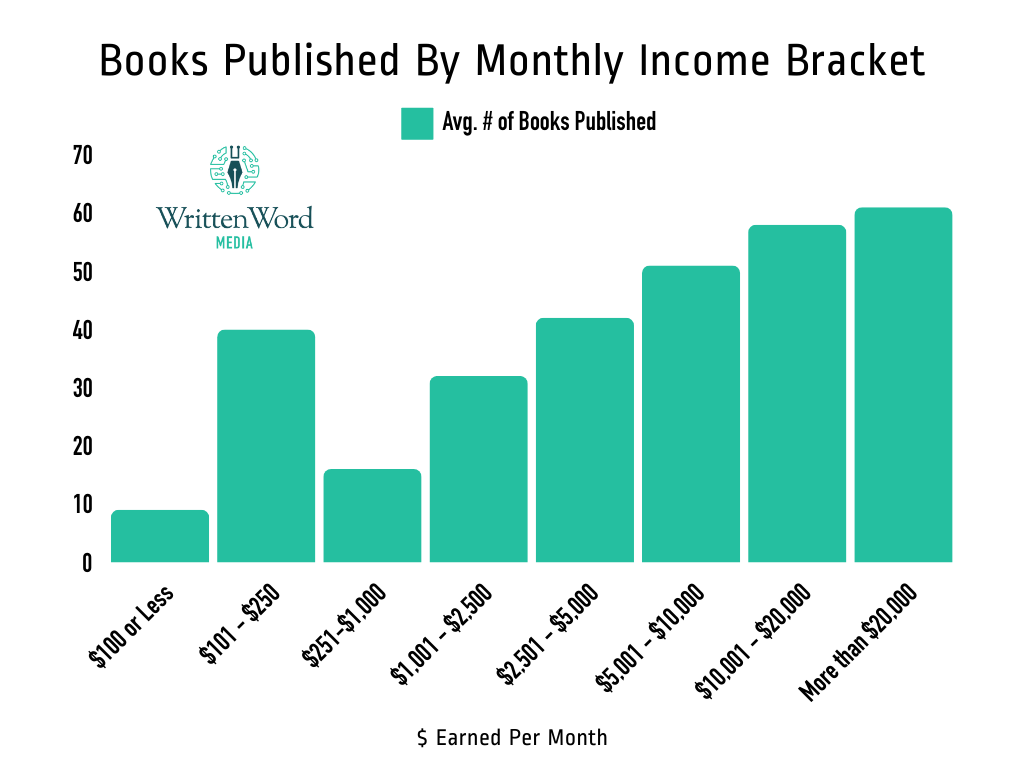
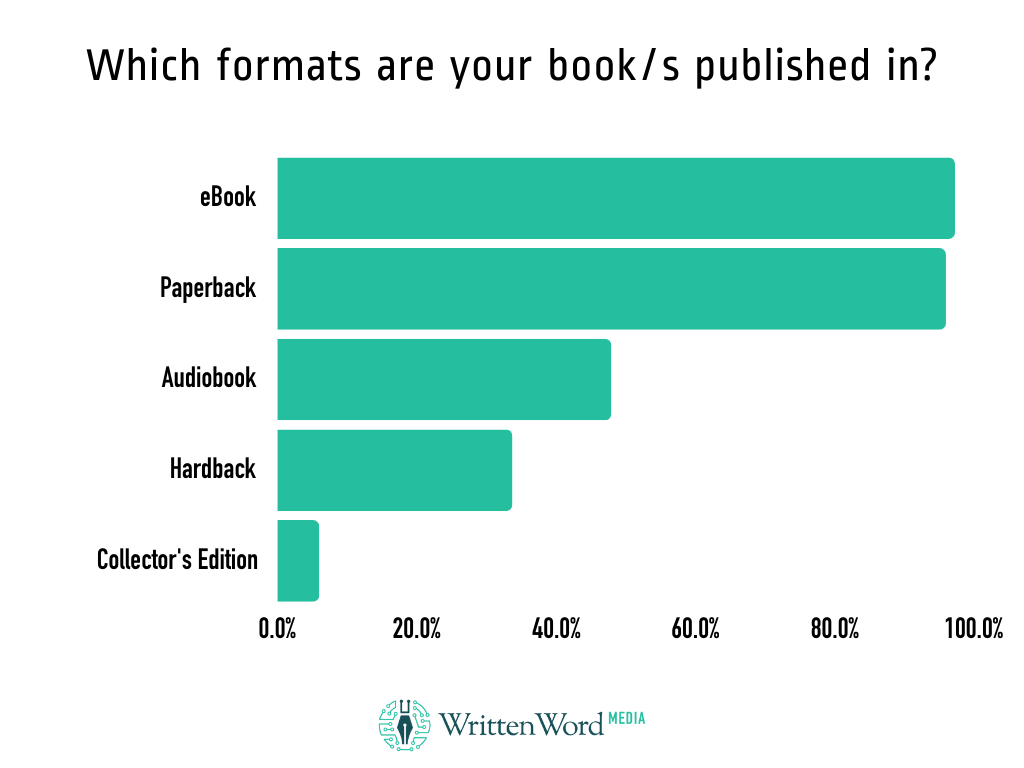
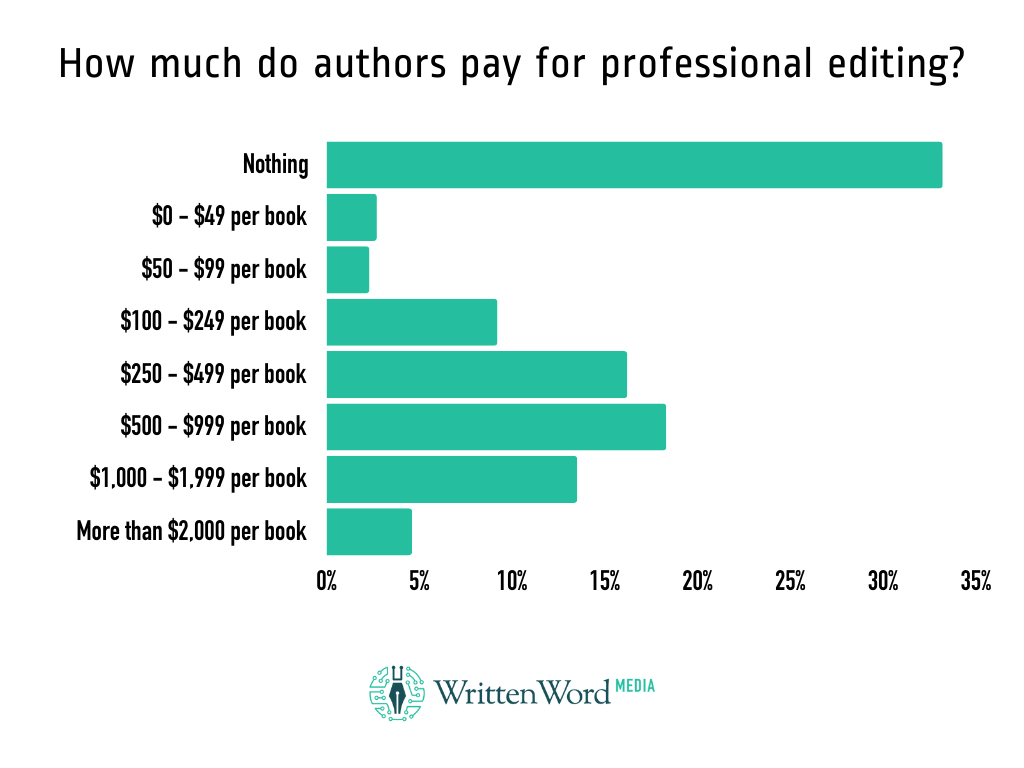
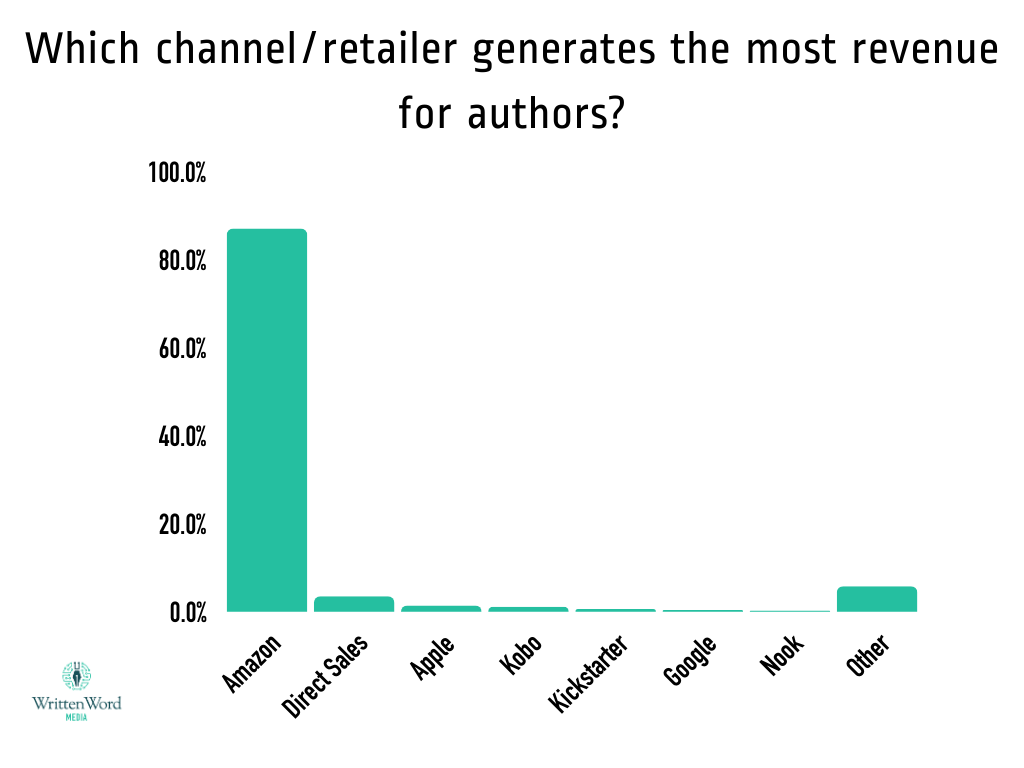
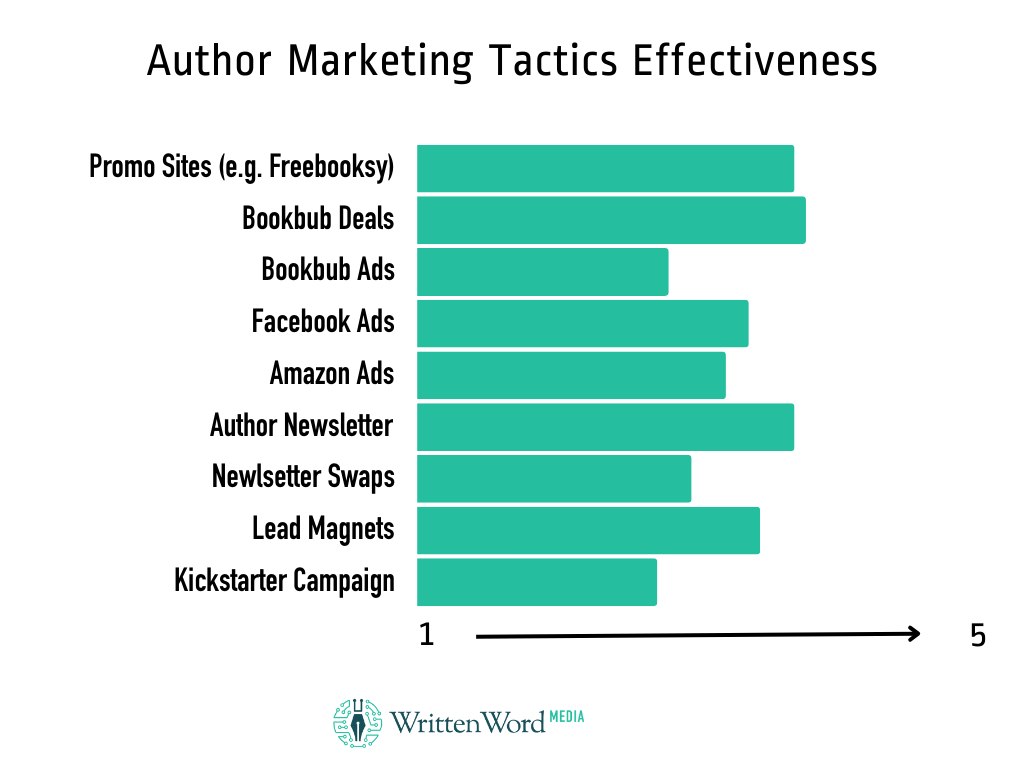

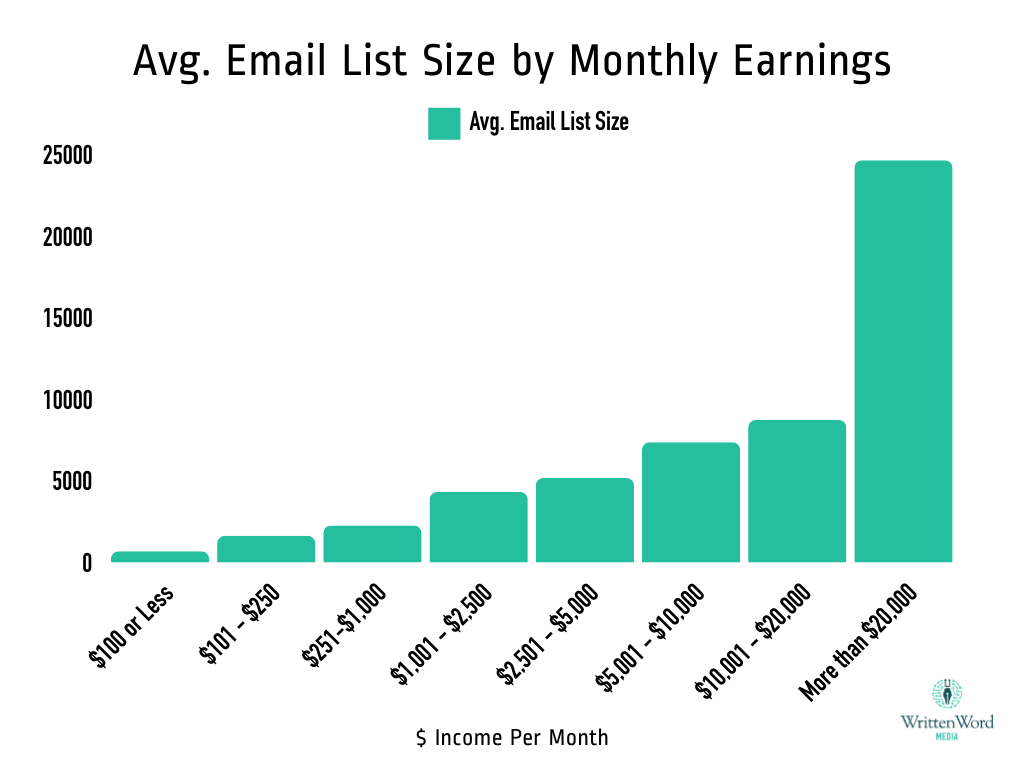
The results were interesting and predictable. I found myself repeating, “Yeah, that’s me, that’s me.”
I like the term “Indie author” but wish you would stop using “self publishing.” That phrase died with the millennium.
I first self-published 35 years ago and still prefer the term “indie”. Indeed, I find the term repulsive. It’s a trendy term and I dislike trendy terms. For the record, my books have sold over 1,100,000 copies and have been published in 22 languages in 29 countries. I have three true international bestsellers, ones that have sold ate least over 100,000 copies in print. One of my books has sold over 465,000 copies in all formats and another has sold over 320,000 copies.
Wow this is awesome. Thank you for taking the time for this and sharing. I am glad to have found WWM
As always, these surveys are very helpful. I find condensing this information into a succinct format allows me to think through my own targets and goals for success in the coming year. Thanks guys, great job
Thank you. It’s interesting to see the correlations for successful self-published authors, where I match up and where I diverge.
I’m pleased that I got off the bottom rung of income, even if only climbed to the next one.
It still felt good
The survey showed me what I’m doing right and what still needs work.
Great work, Lawrence!
Absolutely the best annual source of inspiration to try something new. Also my favourite annual reminder that I do not stand alone against common challenges.
Great information! A nice resource.
This is one of the best surveys and analysis I have seen in a long time. Great numbers and benchmarks to help indie authors. Thank you.
Would be great for a survey for writers of non-fiction
This is great, one of the few “this is what’s really happening” reports for the average person. Keep up the good work!
Lots of great information. I scanned this and will read it more carefully later, but did I miss any mention of TikTok and Instagram, which I think have much greater spheres of influence then some of the other promotion options mentioned? Were they not mentioned by the survey responders for marketing options?
As always, WWM provides more insight into the business of self-publishing than any other group I belong to. Thank you for the data! It gives me motivation and encouragement.
This is a fantastic report, first time I have seen it. I wish I had come across it earlier! Thank you very much for sharing.
It would be useful to know what the sales are in each genre, as well as how many authors are writing in them. oTHERWISE, VERY USEFUL.
I wish /i had seen this information last year!. Thanks for sharing and keep going. Also, I think a focus on non-fiction Business books would be most helpful for me.
I find there is a distinct lack of further analysis of this survey. How about some analysis looking at genre/editing spend/earnings and genre/cover spend/earnings?
As a journalist I always used to be sceptical of survey stories that didn’t tell you about the cohort. Any chance you can tell us how many people responded? A survey of 100 people is a lot less useful than 10,000.
I can’t remember if you asked the question, but does the data tell you what constitutes a book? It’s a lot easier to write 60 novellas of 20,000 words than full-length 100k novels or fantasy doorstops! Is there any bias for book length between genres, or a trend towards fast-publishing shorter books?
Hi Alexander! We had over 1,500 authors respond to the survey. Books with at least 50 pages constitutes a “book” in our survey.
A Very interesting and informative survey and I learned a lot. I was sad to see that Young Adult was not mentioned here. You can’t just lump all books into Children’s. As a YA writer I have found myself in the Children’s section during an event. YA does appeal to ages as young as eight and as old as adult. So you should add that category to your next survm aey. I enjoyed seeing all the information about different groups. As someone who has republished my book with KDP, they also have an option to use Ingram Spark so you can be in bookstores. Then you get paid for sales by Ingram Spark. I have also tried marketing with KDP and still need to see if there are results. Thank you for an excellent survey that should help a lot of Indie authors.
Hi Barbara! We do include YA author responses in this survey 🙂 You can see the percentage of Young Adult authors who responded to the survey in the graph in this section.
Thanks for putting all this together it creates great fuel to write more books and focus on my funnels.
Great article full of valuable information. I am at the point where I am ready to and a ble to employ more marketing strategies. This was a great resource that I will recommend to my community. Thanks!